Why AI isn't the only answer to cybersecurity [Q&A]

Read about any new cybersecurity product today and the chances are that it will be keen to stress its use of AI in some form.
But are we expecting too much from AI and are companies adopting it just because it's on trend? We spoke to Nadav Arbel, co-founder and CEO of managed SOC platform CYREBRO, to find out more about AI's role and why the human factor is still important.
Is AI actually you?

This seems like a great time to ask this question, as it might not matter soon. With the direction things are heading, we may soon arrive at an intersection where the blurring of identity reality and identity fiction is so extreme that we’ll simply stop asking what is authentic personhood.
Case in point, a story out of Paris in July outlines not a dystopian future, but a troubling present reality. The piece recounts the story of computer-generated YouTube storytime videos. The genre is pretty much what it sounds like:
Financial intelligence network aims to secure the cashless economy

Over the last year there has been a significant move away from using cash. In the US alone ATM withdrawals are down 58 percent, 41 percent of consumers have switched from cash to online and phone payments, while 55 percent don't plan to switch back to using cash.
But while this is convenient for the consumer it opens up more opportunities for fraud and cybercrime. Financial risk management firm Feedzai is aiming to boost digital trust, by adding pre-transaction behavioral intelligence to prevent financial crime in real-time before it happens.
Office workers welcome automation but worry about their jobs
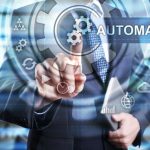
Workers in IT, HR, finance and other roles welcome the use of tools that automate processes and improve productivity -- but many are concerned automation might someday make their jobs less relevant.
A study by Thirdera, specialist in services for ServiceNow users, finds 83 percent of workers are using AI-powered search, chatbots, self-service portals, mobile apps, AIOps, business intelligence and dynamic scheduling tools every day, and 46 percent have been doing so for at least a year.
AI's emergence in strategic business functions: Is procurement getting left behind?
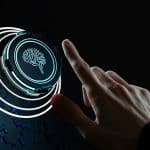
50 percent of respondents to a recent McKinsey survey reported that their companies adopted artificial intelligence (AI) in at least one business function in 2020. As interest and investment in AI and machine learning (ML) continue to grow across different business functions, is Procurement keeping pace with its business unit counterparts?
Procurement value generation is heavily dependent on fast access to accurate data; while other business functions are automating decisioning using AI, in many organizations today Procurement is still working manually just to collect and clean source data before even getting to the decisioning stage.
AI goes mainstream for delivering service desk management

Using artificial intelligence to streamline their service desk operations is something that 93 percent of businesses are planning according to a new survey.
The study conducted by IDG for Freshworks shows 61 percent of IT managers have already deployed AI at some level and 32 percent are exploring the possibilities.
How attackers can manipulate social media recommendations

Recommendations based on AI are something we encounter all the time. From shopping sites, streaming services and social media we're constantly shown stuff that the AI thinks we'll like.
But how easy would it be for an attacker to manipulate these recommendations to promote conspiracy theories or spread disinformation?
AI isn't biased, but you might be

We've all seen the headlines suggesting that AI is racist and sexist. However, many people overlook one important fact -- that AI is simply a tool, incapable of being inherently biased. That’s not to say AI isn’t capable of producing biased outcomes -- as the headlines show, it certainly is. But it can only ever be as biased as the data upon which it relies.
So how can developers and marketers avoid deploying biased AI? Unfortunately, there is no magic one-size-fits-all solution. As with any successful technology deployment within a business, it requires a thorough understanding of the datasets you are working with, and the outcomes AI can produce with said data. The first step is knowing what to look for.
How deep learning can deliver improved cybersecurity [Q&A]

Traditional cybersecurity isn't necessarily bad at detecting attacks, the trouble is it often does so after they have occurred.
A better approach is to spot potential attacks and block them before they can do any damage. One possible way of doing this is via 'deep learning' allowing technology to identify the difference between good and bad.
The true impact of digital technology on your workforce efficiency

We know technology has had an impact on every area of our lives. We can manage almost our entire lives through our smartphones, from arranging appointments to paying bills. Technological innovations have also found a way into the workplace, completely revolutionizing the way we work.
As technology is embedded into workplaces, it can unsettle workers. With technologies including artificial intelligence and automation able to replicate elements of our jobs, it’s easy to see why. Half of UK workers believe they may be replaced by automation, AI, or robots in the next decade. A further 61 percent are concerned about AI.
Top industries on which AI and ML will have the greatest impact

Artificial intelligence (AI) and machine learning (ML) have been two of the most disruptive technological advancements of the past several years.
Gartner predicts that by 2024, 75 percent of enterprises have shifted from AI pilot stage implementation to operationalization. Their effects have been wide-ranging and promise to continue into the foreseeable future. Businesses will gain a substantial competitive advantage by capitalizing on the benefits of AI and ML.
How to address the FTC guidance on AI today
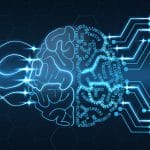
The Federal Trade Commission (FTC) recently published a blog entitled "Aiming for truth, fairness, and equity in your company's use of AI" that should serve as a shot across the bow for the large number of companies regulated by the FTC.
Signaling a stronger regulatory stance on deployed algorithms, the FTC highlights some of the issues with AI bias and unfair treatment and states that existing FTC regulations -- such as the Fair Credit Reporting Act, the Equal Credit Opportunity Act, and the FTC ACT -- all still apply and will be enforced with algorithmic decision-making.
Leveraging AI to close the application knowledge gap
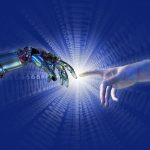
As we move further into the digital age, technologies need to evolve quickly enough to support the constantly changing needs of the modern enterprise. While cloud computing has surged in popularity in recent years, most organizations must simultaneously continue to rely on their legacy systems for many of their core functions.
Despite the cloud’s ability to minimize IT infrastructure costs and adjust resources to meet fluctuating and unpredictable demand while getting applications up and running faster, 71 percent of the Fortune 500 and more than 90 percent of the world’s largest 100 banks, 10 largest insurance companies and 25 largest retailers in the U.S. all continue to depend on outdated systems to power their mission-critical applications.
Reducing the carbon footprint of AI: The debate continues
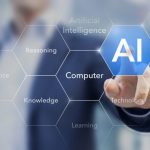
The debate about the energy greediness of large AI models is raging. Recently, an AI ethics researcher at Google was dismissed because she had pinpointed the upward spiral of exploding training data sets. The fact is that the numbers make one’s head swim. In 2018, the BERT model made the headlines by achieving best-in-class NLP performance with a training dataset of 3 billion words.
Two years later, AI researchers were not working with billions of parameters anymore, but with hundreds of billions: in 2020, OpenAI presented GPT-3 -- acclaimed as the largest AI model ever built, with a data set of 500 billion words!
How to reduce the carbon footprint of AI?

Can artificial intelligence be deployed to slow down global warming, or is AI one of the greatest climate sinners ever? That is the interesting debate that finds (not surprisingly) representatives from the AI industry and academia on opposite sides of the issue.
While PwC and Microsoft published a report concluding that using AI could reduce world-wide greenhouse gas emissions by 4 percent in 2030, researchers from the University of Amherst Massachusetts have calculated that training a single AI model can emit more than 626,000 pounds of carbon dioxide equivalent—nearly five times the lifetime emissions of the average American car. Who is right?
Recent Headlines
BetaNews, your source for breaking tech news, reviews, and in-depth reporting since 1998.
© 1998-2025 BetaNews, Inc. All Rights Reserved. About Us - Privacy Policy - Cookie Policy - Sitemap.